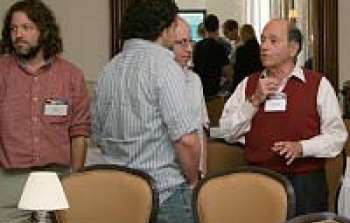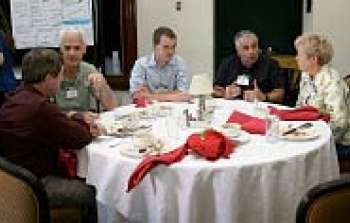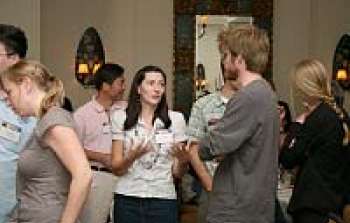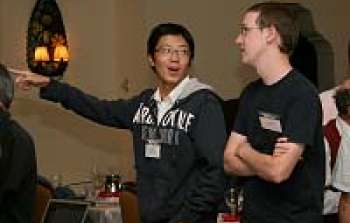sci10017 — Announcement
Presentations from “Massive Galaxies Over Cosmic Time 3” Now Available Online
November 30, 2010
In November, NOAO hosted the scientific workshop “Massive Galaxies Over Cosmic Time 3: the Role of Gas and Dust”. Generous financial support for the workshop was provided by AURA, the Herschel Science Center, the Spitzer Science Center, Steward Observatory, and NOAO.
The workshop focused on the nature of star formation in massive galaxies at the epoch of peak activity. While it is well established that the old stellar populations in present-day massive galaxies were formed at high redshift, the conditions under which these stars formed are less clear. Observations with the Spitzer Space Telescope have revealed that much of the star-formation at high redshift takes place in dusty galaxies with very high infrared luminosities. In addition, there is a growing awareness that many factors may regulate the progress of star formation in galaxies (e.g., gas accretion, feedback from the growth of black holes and/or star formation).
The availability of new data from IR space telescopes (Spitzer, Herschel and WISE), the imminent availability of new ground-based capabilities for probing gas and dust in high-redshift galaxies, and the recent improvements in theoretical simulations made it timely to revisit our theoretical and observational understanding of star-formation in galaxies at their epoch of peak activity.
Approximately 60 participants gathered in Tucson to discuss questions such as the following. What do the state-of-the-art observations tell us about the formation, assembly, and activity in galaxies at this peak epoch, in particular about the fueling of star- and AGN-formation in galaxies? What do theoretical models predict for the physical state of gas and dust in high-redshift galaxies and what types of observations can best discriminate between competing paradigms for galaxy formation and assembly? What can be learned about the physical conditions in these distant luminous galaxies from studies of more local galaxies? The presentations and abstracts from the meeting are now available online at http://www.noao.edu/meetings/mgct3/.
About the Announcement
| Id: |
ID
sci10017
|



